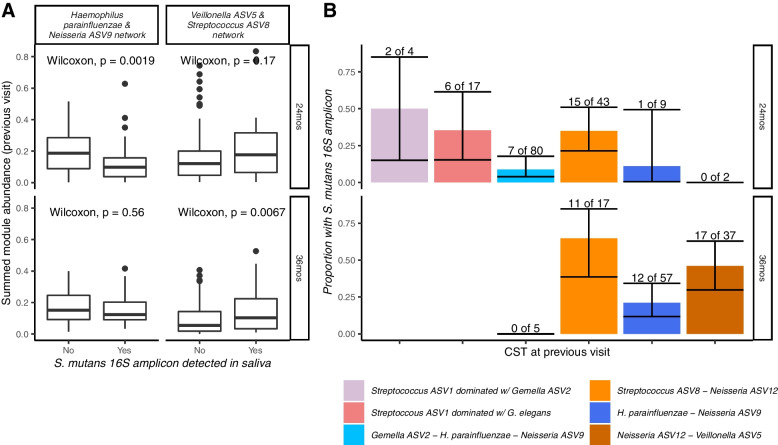Fig. 6.
Network modules from weighted co-occurrence network (WCN) graphs and community state types (CST) from community state typing are associated with future detection of Streptococcus mutans among incident and pre-incident saliva samples from an incidence density-matched nested case-control study selected form the Center for Oral Health Research in Appalachia 2 cohort study. A Individuals who have Streptococcus mutans detected at 24 months have higher abundances of the protective H. parainfluenzae and Neisseria ASV9 network at 12 months (n = 157 with both 12- and 24-month clean 16S amplicon data, n = 116 with both 24- and 36-month clean 16S amplicon data). B Individuals with 12-month and 24-month CSTs characterized by Haemophilus parainfluenzae and Neisseria ASV9 were less likely to have S. mutans detected in their 24- and 36-month saliva samples respectively (n = s155 with both 12- and 24-month clean 16S amplicon data and n = 2 with missing CST at 12 months, n = 116 with both 24- and 36-month clean 16S amplicon data)

